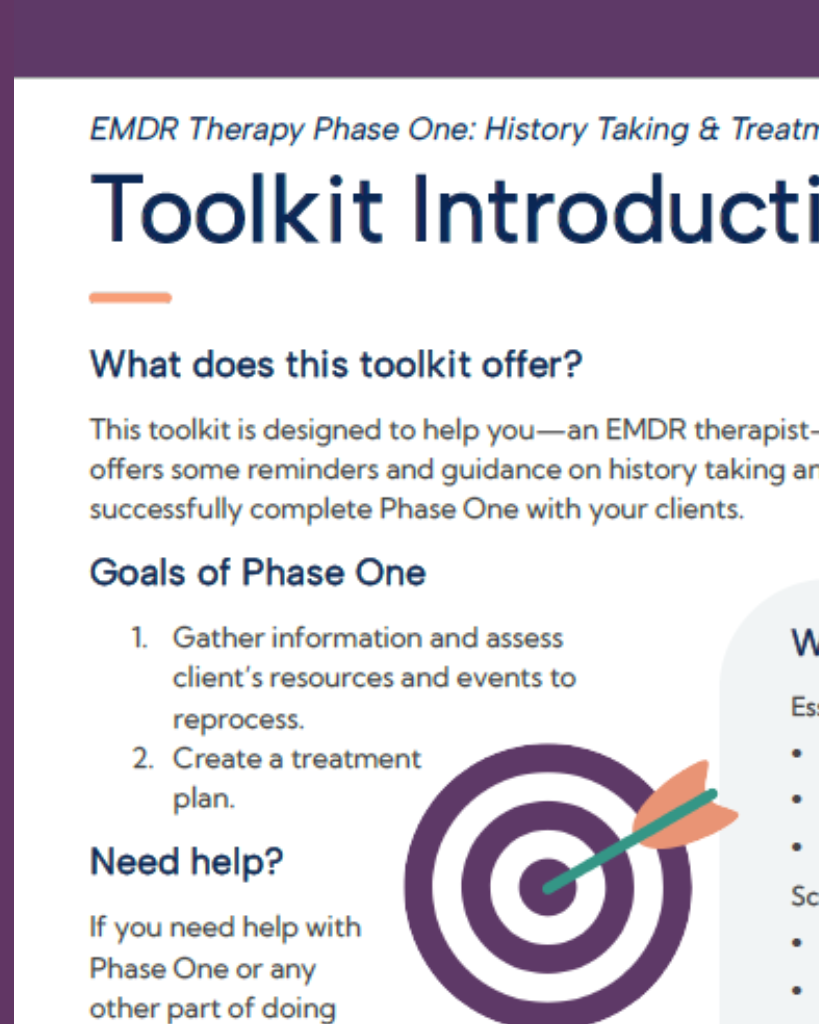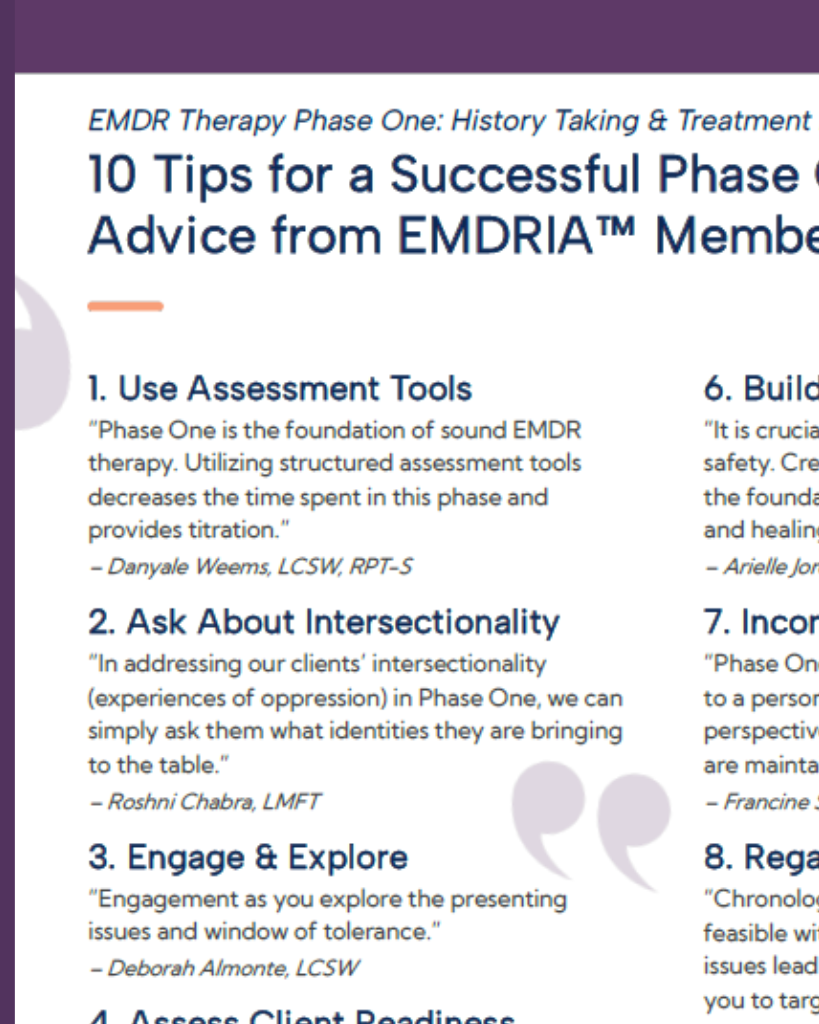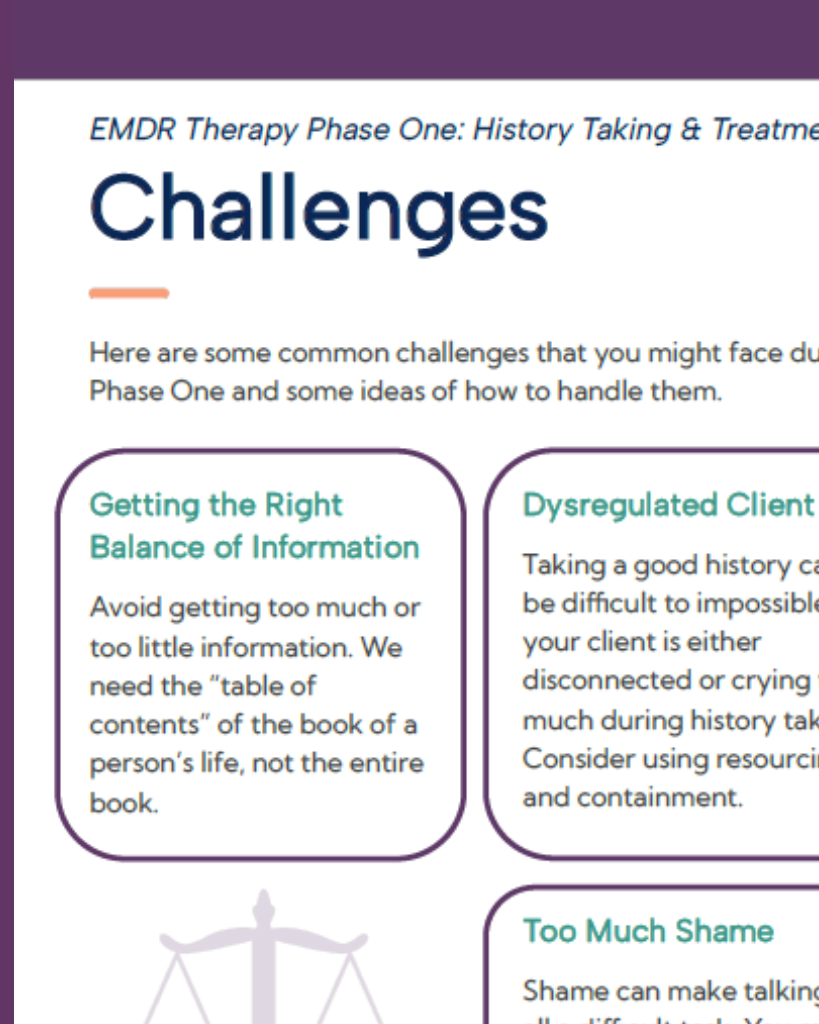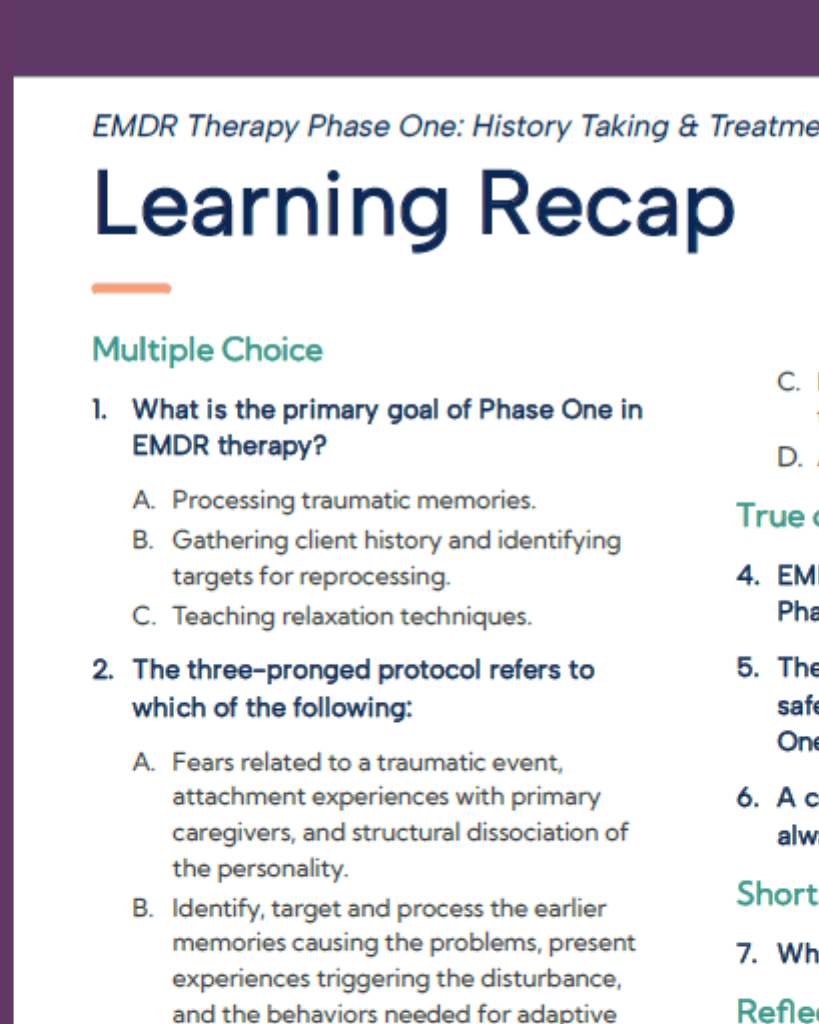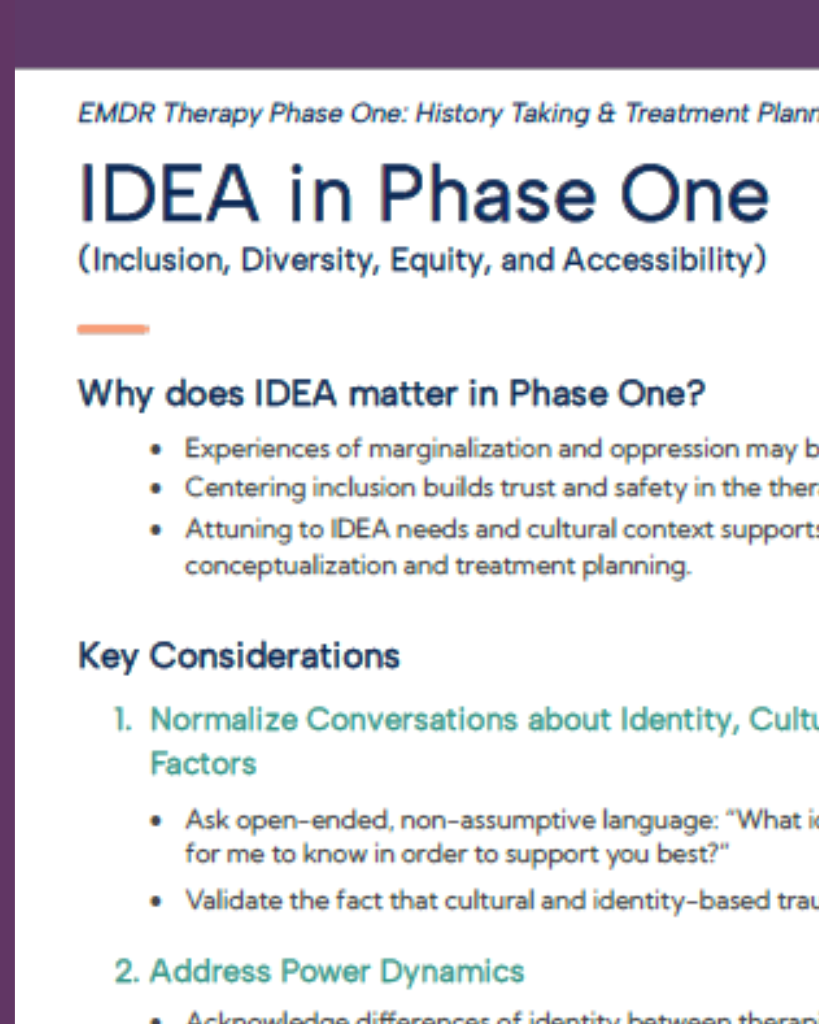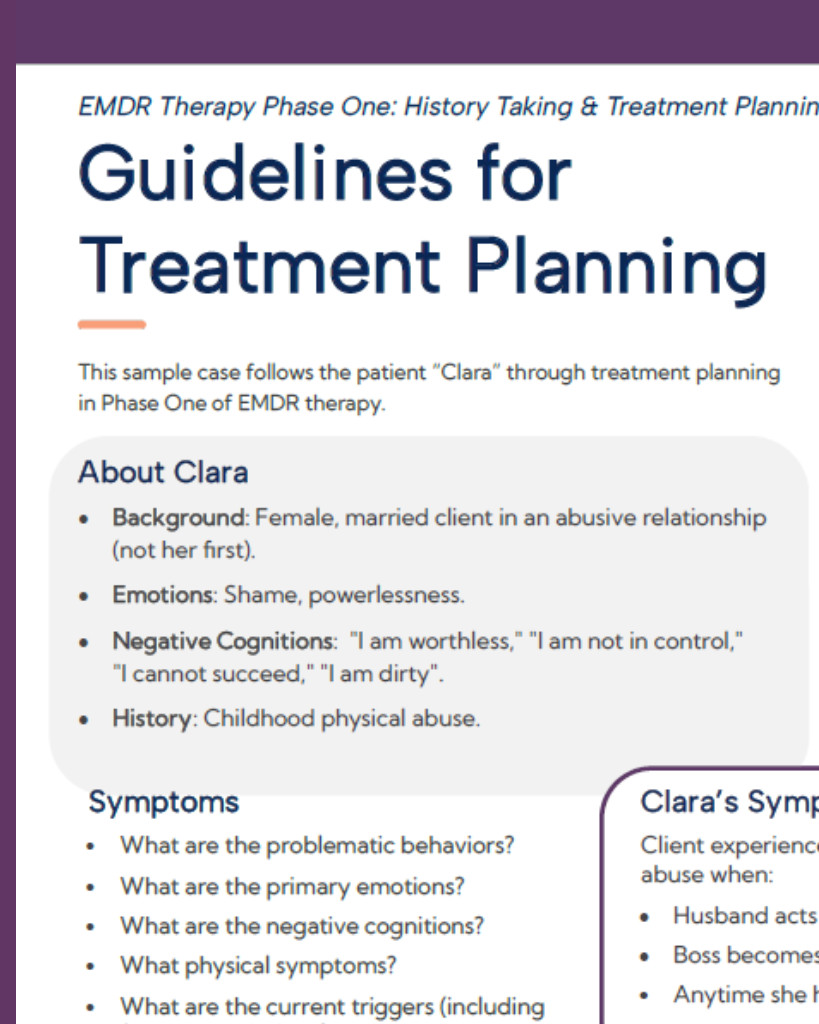
Tap Into It collection
Discover professionally curated content such as:
- Practice resources (toolkits, infographics, videos)
- Treatment guidelines
- Research articles (Journal of EMDR Practice and Research, and links to other publications)
Includes a mix of open access, members-only, and links to external content.
Or, search the full EMDRIA Library.
Search the Tap Into It Collection
Randomized feasibility study evaluating eye movement desensitisation and reprocessing therapy for functional neurological disorder (MODIFI) (Journal of Neurology)
This randomised feasibility study aimed to assess whether a large-scale trial evaluating EMDR for functional neurological disorder (FND) would be feasible and acceptable, finding warranted positive results.
“Stepping into the trauma memory scene” with EMDR: What is it like for adults with psychosis? (Psychosis)
A qualitative study of ten participants interviewed using Interpretative Phenomenological Analysis (IPA) to enable in-depth exploration of experiences of EMDR targeting trauma memories in psychosis.
Disentangling eye movement desensitization and reprocessing mechanisms of action: The impact of eye movements in the eye blink conditioning task (Psychology and Psychotherapy Theory, Research, and Practice)
This study aimed to explore an EMDR mechanism of action by investigating the effect of horizontal eye movements (EM) on fear extinction learning in healthy individuals, using an Eye Blink Conditioning (EBC) task.
Full Packet (Phase 1 Toolkit)
A toolkit designed to help EMDR therapists gather comprehensive client information and assess readiness for EMDR treatment.
10 Tips for a Successful Phase One (Phase 1 Toolkit)
Top phase one EMDR therapy tips such as assess client readiness, create a timeline, build a therapeutic alliance, ask about intersectionality.
Challenges (Phase 1 Toolkit)
Here are some common challenges that you might face during Phase One and some ideas of how to handle them.
Learning Recap (Phase 1 Toolkit)
Wrap up with a recap of essential concepts and tools to reinforce learning and help you confidently move forward into Phase Two.
IDEA in Phase One (Phase 1 Toolkit)
Attuning to IDEA needs and cultural context supports more accurate case conceptualization and treatment planning.
Guidelines for Treatment Planning (Phase 1 Toolkit)
This sample case follows the patient “Clara” through treatment planning in Phase One of EMDR therapy.


